Warren Buffett doesn’t hide the fact he loves dividends. While he doesn’t buy a business solely because it pays a dividend he enjoys when companies pay one and regularly increase it. Even so, he won’t let Berkshire Hathaway (NYSE:BRK-A) (NYSE:BRK-B) pay a dividend. He says he can do a better job of allocating capital than the shareholders.
Of the 43 stocks in Buffett’s portfolio, 25 pay a dividend that have an average annual yield of about 2%. He generates about $6 billion in annual dividend income. They span numerous industries, giving Buffett wide diversification, and range in market capitalization from Louisiana Pacific (NYSE:LPX) at $5 billion to his largest holding, Apple (NASDAQ:AAPL), with a $3 trillion valuation.
What follows are Warren Buffett’s highest-yielding dividend stocks according to his latest 13F filing.
Jefferies Financial Group (JEF)
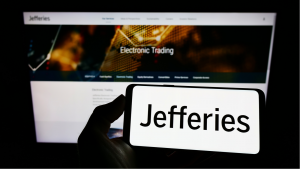
As an investment bank, Jefferies Financial Group (NYSE:JEF) will rise and fall on the basis of the dealmaking it’s able to perform. Both mergers and acquisitions (M&A) and initial public offerings (IPO) stalled in 2022 as Russia invaded Ukraine and the Federal Reserve began an aggressive campaign of hiking interest rates. M&A deals tumbled 37% from the year before while only 71 IPOs were launched.
That continued in 2023 though not at the same rate of decline. Global M&A deals were down 27% while IPOs were off 8%. That’s evident in Jefferies investment banking revenue, which is down 2% year-to- date, though it started to revive in the third quarter. It was able to maintain growth, though, because its capital markets business remained strong even as it saw seasonal softness last quarter. Investment banks are looking forward to a better 2024 with interest rates stabilizing and deal flows increasing.
CEO Richard Handler and president Brian Friedman said, “We are increasingly optimistic that we have come off the bottom of the cycle and that momentum in investment banking will continue.”
Jefferies began paying a dividend in 2018, but quickly grew the quarterly payout from $0.10 to $0.30 per share. It yields 3% annually.
Coca-Cola (KO)
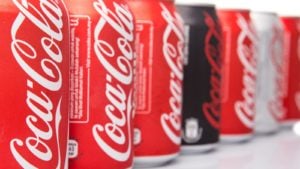
Buffett famously drinks several cans of Coca-Cola‘s (NYSE:KO) Cherry Coke every day. He first bought the beverage maker’s stock in the 1980’s and never let go. Today he owns 400 million shares representing more than 9% of Coke’s total outstanding shares. But he likes it because it’s a cash generating machine producing nearly $750 million annually in dividend payments.
Coca-Cola began paying dividends in 1920 and never stopped. It started raising the payout in 1963 and that streak continues till today, making Coke a Dividend King. There are few companies with a longer track record than the soda giant in paying and raising its dividend. The payout currently yields 3.1%.
Yet it’s not just the dividend that makes Coca-Cola so valuable. It’s a globally recognized brand that has a value of more than $58 billion, according to the marketing analysts at Interbrand. That makes it the eighth largest brand in the world.
One of the reasons Coke possesses such resiliency is it’s a relatively recession-resistant product. Particularly during tough times, Coke beverages are an affordable drink that consumers turn to again and again for comfort.
Ally Financial (ALLY)
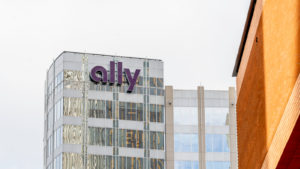
Buffett also took a 9.6% stake in Ally Financial (NYSE:ALLY) beginning last year. His affinity for financial stocks is nothing new. Bank of America (NYSE:BAC) is the second largest position in Berkshire Hathaway’s portfolio with over 1 billion shares valued at $34.5 billion.
Ally isn’t quite so large. The consumer-focused digital-only bank represents just 0.3% of the portfolio, though the 29 million shares Buffett owns equate to almost $1 billion in value.
It may also be seen as something of a risky investment because it is a niche bank sensitive to economic conditions. Auto financing represents two-thirds of its business meaning it will perform much as that industry does. The past few years have been difficult and rising interest rates make buying a car more expensive. Ally’s net income so far this year is down 34% compared to a year ago.
Ally reported a record 3.7 million consumer auto applications in the third quarter, which helped drive loan origination volumes to $10.6 billion. Yet 20% of those originations were for Stellantis (NYSE:STLA) and 22% were for General Motors (NYSE:GM). Back when Ally was GMAC it was the captive finance unit for GM and Stellantis. It’s why 78% of its lease volume is for Stellantis vehicles. So Ally does have customer concentration risk too.
The bank began paying a dividend in 2016 and steadily increased it over the ensuing years. With Ally stock up 40% in 2023, the dividend is yielding 3.5% annually.
HP (HPQ)
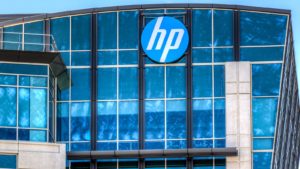
Computer company HP (NYSE:HPQ) also doesn’t occupy a large position in Berkshire Hathaway, though at 0.4% of the total it’s slightly bigger than Ally Financial. Buffett does own 5% of the company with his 51 million shares, however.
It is an interesting stock for Buffett to own. Although HP is the second largest PC maker with a near-20% share, slightly behind Lenovo at 23.5%, according to IDC’s analysts, computers have been in a secular decline. PC sales reached their peak in 2011 when 365 million units sold, but have fallen ever since. Global shipments were down 7.6% in the third quarter to 68.2 million.
If there was one surprise, however, is that HP was the one manufacturer last quarter to see shipments rise. They grew to 13.5 million from 12.7 million a year ago. It was the only manufacturer to see an increase but it was more the result of “normalizing inventory” than an uptick in demand. Still, HP is looking to artificial intelligence (AI) to drive sales higher going forward. It plans to release an AI PC in 2024.
HP is also somewhat unique in that it’s a computer hardware stock that pays a dividend. It’s also one of the highest yielding at 3.7%. Dell (NYSE:DELL) also pays a dividend, but its payout yields just 1.7%.
Citigroup (C)
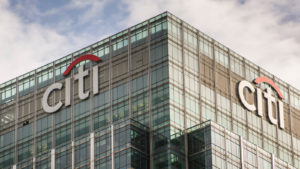
Another financial stock, Citigroup (NYSE:C) is a money center that is also witnessing the same impacts from the Federal Reserve’s hyper aggressive interest-rate policies. Although revenue was higher in the third quarter, net income was essentially flat due to higher expenses and the higher costs of credit.
The stock is on a bit of a roller coaster ride this year, tumbling over 15% lower at one point before racing 33% higher. Shares are up 12% in 2023 as we near the finish line. But Buffett’s stake remains below his purchase price from last year. It was then the Oracle of Omaha surprised many by completely selling out of his stake in long-time holding Wells Fargo (NYSE:WFC) and making a big bet on Citi. It was likely the turnaround story Buffett bought.
The money center ran into regulatory issues and was working to fix its risk and compliance systems. Still, it was a change from Buffett’s preference for U.S.-centered banking. It also means Citi’s stock at $50 per share is trading about 17% below the price Buffett purchased it at. It remains a global financial powerhouse and it pays a dividend of $1.97 per share each year. The payout yields 3.9% a year.
Chevron (CVX)
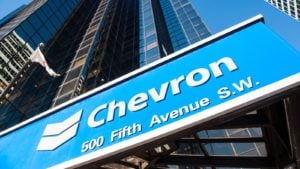
Chevron (NYSE:CVX) had been Buffett’s favorite oil stock until he discovered Occidental Petroleum (NYSE:OXY). Then the Oracle began selling down his stake in the one while buying up more shares of the other. Today they are approaching parity in Berkshire Hathaway. Buffett owns $16 billion worth of Chevron and almost $15 billion worth of Occidental. It was a smart swap.
Over the past two years, Occidental’s stock has more than doubled while Chevron is up just 30%. Both, though, are doing significantly better than the S&P 500 which is flat over the same time frame. Still, the oil giant represents 4.5% of Berkshire’s holdings and is the fifth largest stock in the portfolio, so it remains a core holding. It also generates around $650 million in dividend payments. The dividend yields 4%.
Chevron has a strong balance sheet and generates significant cash flows so it isn’t reliant on debt-financing to operate. It also makes it resilient in the face of high-interest rates. It’s how it was able to negotiate a $53 billion all-stock deal for Hess (NYSE:HES). It gives Chevron some important assets in Guyana that will bolster its position in the future.
Kraft Heinz (KHC)
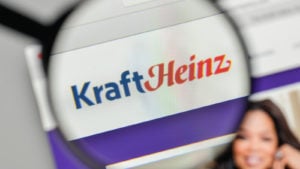
Packaged foods leader Kraft Heinz (NASDAQ:KHC) is the seventh biggest holding in Warren Buffett’s Berkshire, accounting for 3.1% of the total, but at 4.4% is also the highest yielding stock. Where Citigroup seemed to be an anti-Buffett stock, Kraft is very much in line with the billionaire’s penchant for buying consumer-facing stocks.
Yet it also happens to be one where Buffett had misgivings. Although he helped purchase Heinz back in 2013 and engineer its takeover of Kraft Foods, he said he overpaid for the food company. And it shows in the stock’s performance. Over the past 10 years, Kraft Heinz’ total return is -2% compared to a 151% gain by the S&P 500. Still, he owns 26% of the business and doesn’t seem interested in selling.
That could be because Kraft Heinz owns some powerful brands. In addition to the two namesake companies, it also owns Jell-O, Kool-Aid, Philadelphia brand cream cheese, and Maxwell House Coffee. Sales and adjusted earnings are growing now, even in the face of inflation.
One of the benefits of brand names is consumers can turn to them knowing the quality they are getting at anytime. That Kraft Heinz is able to still attract consumers even when their wallets are being pinched is a testament to its longevity.
On the date of publication, Rich Duprey held a LONG position in KO and CVX stock. The opinions expressed in this article are those of the writer, subject to the InvestorPlace.com Publishing Guidelines.

